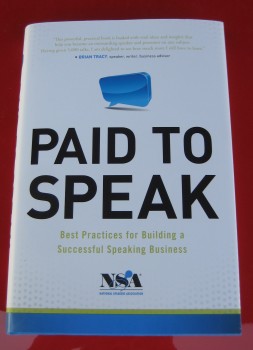
The business of educating, inspiring, and educating audiences can be one of the most rewarding careers when the audience gets everything they expected and more. This is the challenge for professional speakers and meeting planners
These days audiences are better educated, and thanks to abundant digital and social media, have pretty much seen and heard it all.
This is why the traditional motivational speech is out of favor, and why the same may soon be true for the standard presentation as we know it.
What inspires and motivates audiences these days is substance. This includes personal stories and content in all of its forms that make meaningful connections that transcend the speech.
A True Story
Several years ago I accepted an engagement to be the sole keynote speaker for an event, and on very short notice. As a result, it was not possible to interview audience members as I usually do, and that created some uncertainty.
Nevertheless, the meeting planner assured me I would be addressing a mainstream small business audience, which happens to be my sweet spot.
What I learned after my presentation was the previous speakers for this event were traditional motivational speakers, such as celebrities and Olympic athletes. I’m thankful I did not know this in advance.
One audience member shared this with me after the event: “You’re one of the best speakers we’ve had in years.” I instantly knew he was sincere, so I thanked him and inquired as to why.
“I don’t need to learn how to kick a football. I’m operating a local, small business, and what you shared with me today will actually help me grow my business.”
Touchdown! Welcome to a new ball game.
The new motivational keynote presentation is a content-rich, collaborative event that engages the audience and helps them accomplish their goals.
What’s especially interesting is what’s working these days are lessons derived from real-life experiences by regular people. This is what is relevant and relatable for most general audiences, and therefore is defining the new motivational speaker as one that leads with content.
In fact, a recent industry report by Tagoras and Velvet Chainsaw Consulting suggests that “current, relevant content” is the most important criteria for speaker success today, as listed by over 75% of the survey respondents.
This is the new motivational speaker, one that …
#1 – Collaborates with The Audience
On the surface, I imagine it appears that speakers are communicating with our audiences when we are working. While this is true, we are also actively using all of our senses to discern even the most subtle clues that we are indeed connecting with that audience.
This collaboration is like a dance. When it is working it is an unmistakable feeling you know with certainty.
When a speaker views a presentation as a performance, it compromises its value. Yet, when it becomes a dance or collaboration that engages them with the speaker, and more importantly, with each other, it becomes something special, because every audience and speaker will never be as they are at that one moment in time.
How does this work on a practical level?
When you rigidly define the presentation in advance you limit what it can be. Whereas, when you allow it to evolve right up to the minute, and continue to keep it open as you gracefully move forward, it indeed becomes a collaborative dance with unlimited potential.
This is one reason why I never give my presentation slides out in advance. Just the feeling of being locked in feels like I’m squeezing the life out of something that is still unborn.
#2 – Gives the Audience Confidence
I’ve learned over time that to be free in the moment to connect with the audience requires rigorous preparation and practice. This includes, but is not limited to the following.
Have a structure. But don’t be locked into it. For example, something may happen minutes before you step on stage that will make for an ideal opening. (More on this in #3)
Be ready for anything. Early in my career I hired an expert to “punch up” the humor in my presentation. The laughter I received was so unexpected I “stepped on it,” rather than giving it time to breathe. Now I know to expect the unexpected, and respond appropriately.
Know your material. In my opinion, the reason for ums, ahs, and other speech crutches are not knowing the material well. The solution is getting in front of more audiences to get the necessary experience, with blogging being a virtual means for accomplishing the same.
Tell stories. Stories are the lifeblood of any presentation; without them you have facts, figures, data, and information that are quickly forgotten. If that information is brought to life with a story, it becomes memorable.
Shift to engage. There should be no fewer than 7-8 shifts in any presentation, including the opening and closing stories. These shifts or movements change the tempo and get or keep the audience engaged. Every humorist knows that whether a joke works or not, you move on to the next one. For business speakers, this is the next shift or story.
Experiment with preparation. I personally find it invaluable to interview members of the audience in advance. This develops a relationship with the audience before taking the stage. Plus, you acquire useful information that shapes your presentation in powerful ways, thereby making it feel more like a conversation than a presentation
Trust the audience. Once in a while you will make amazing connections with your audience. This happens when you begin to feel the connection, and then have the courage to “step into it.” It’s literally like taking a leap into the unknown with the faith that you will be supported. While there is risk, you’ll never experience it unless you give it a try.
Swing for the seats. When you confidently go for it all, you may win or fail, but you will never have any regrets. If you only want to make a living as speaker you can just play it safe, as many do. However, if you want a career where you can really make a difference, you have to be willing to go all in.
Surprise with hold-backs. Unlike the “one more thing” that Steve Jobs became known for, hold-backs are kept in the back pocket (so to speak) and only used when opportunities for using them presents themselves – if they do at all. The trick is knowing your audience well enough to anticipate what might happen, such as the need to cut the presentation short, stretch it out, tell a story, or have an answer to the question: What else can you do for us?
Professional speakers are always prepared for these opportunities.
#3 – Has a Process that Always Delivers
Finally, the new motivational speaker has a system that ensures they always deliver, no matter what . I have a checklist that continues to evolve and grow as I encounter new circumstances that provide invaluable experience.
Immediately before the event everyone is “setting the stage.” This is when all eyes are on the speaker, the one who is expected to be gracious, patient, and in control, regardless of what may be happening around them.
Once again, the key is preparation. Here’s a partial list.
Show up early. Speaking is a business – which means you always have to deliver. There are numberless things that can go wrong, and time is on your side when it comes to getting them remedied.
Have a timeline. I have a habit of writing out my timeline the evening prior to every event – when I will wake up, meditate, exercise, have breakfast, etc. This gives me multiple checkpoints that ensure I get to the event on time and show up mentally prepared.
Notice everything. Walk and feel the room before setting up for the event (preferably the day prior) when you can be alone. Notice lighting, temperature, cords that may be trip hazards, background noise. This is a great time to visualize an outstanding outcome!
Write down names, phone numbers, and keep them handy. Everyone that you meet will be honored if you acknowledge them by name. Plus, having the phone numbers of everyone that can help troubleshoot if necessary is an essential best practice.
Greet the audience before the event begins. When you can greet people before you take the stage you honor their presence and build a bond that can only get even stronger.
Test, test, test all of the AV. Ideally, this should be done multiple times, preferably beginning the the day prior.
Get centered. This may vary for some, but I know many speakers take a few minutes of quiet time as I do to before taking the stage to clear their minds and get centered. While this can be challenging when you are the center of attention, it can be disguised as a last-minute “restroom break.”
Keep your focus. Before the program its easy to get distracted by any number of things, including multiple presentations at the event, or upcoming events in the coming days. In the film The Verdict, Paul Newman is a down on his luck attorney who gets one last chance with a big case. He reminds himself over and over, “There is no other case. This is the only case. THIS – is the case.” I do the same for every presentation to keep my focus.
Trust your Intuition. When you are on stage anything is possible. The more you trust and act on your intuition, the more likely the event will prove to be a success.
Stick to your process. I was once asked by a meeting planner (in advance) to stop my presentation to an audience of over 500 and conduct a brief Q&A. This was a mistake. I lost control of the room, as well as the buoyant energy that we created up to that point. My process has since been revised, and this will never happen again, at least not without moderators to help manage the process.
This underscores one thing that some speakers forget. Regardless of the cause, the speaker always bears full responsibility for what they can control, which is nearly everything associated with their program. Failure to do so will not earn you sympathy – or get you rehired.
Leave late. Running off-stage is not only disrespectful of the audience, it is a missed opportunity. Patiently meeting and greeting with audience members is considered by most meeting planners to be an extension of the formal program. Plan for this, however long it may take.
Just to set the record straight, I have never (and will never) refer to myself as motivational speaker. That phrase just happens to be one that is readily recognizable to most people, especially those outside of the meetings and events industry.
Like so many others that see the future clearly, I consider myself to be a content speaker that is willing to do whatever it takes to deliver a collaborative experience that engages every audience member with as many others as possible.
Now over to you. Please share your thoughts with a comment below.
About the Author: Jeff Korhan, MBA, helps mainstream small businesses create exceptional customer experiences that accelerate business growth. Get more from Jeff on LinkedIn, Twitter and Google+.
Jeff is also the author of Built-In Social: Essential Social Marketing Practices for Every Small Business – (Wiley 2013)



